Abstract
1. Measurements of intitial chemical changes and recovery oxygen consumption (deltaO2) were made in unpoisoned aerobic frog sartorius muscles at 0 degrees C to provide independent measures of the chemical energy used for isometric tetani of various durations. 2. DeltaO2 was measured polarographically and increased in a curvilinear fashion with stimulus duration. For stimulations longer than 4 sec deltaO2 was a linear function of the tension-time integral. 3. Measurements of the changes in the content of phosphorylcreatine, 'free' creatine and inorganic phosphate were made in muscles rapidly frozen during a tetanus. The average of these quantities, delta approximately P, was used to measure the initial 'high energy' phosphate utilization. No break-down of 'high-energy' phosphate compounds was detected up to 200 sec after relaxation of tension. Changes in the content of ATP were not observed except for a small decrease (-0-25+/-0-1 mumole/g) in muscles tetanized for 1 sec. 4. Delta approximately P also increase curvilinearly with tetanus duration and, for tetanic durations greater than 4 sec, was a linear function of the tension-time integral. 5. Both deltaO2 and delta approximately P were quantitatively related by a constant scaling factor of about 4-3 (delta approximately P/deltaO2) throughout the range of tetanic durations studied. The constancy of this ratio.provides evidence against the hypothesis that a significant 'missing reaction' provides energy during any one portion of the tetanus. Several hypothesis may account for the numerical value of the ration delta approximately P/deltaO2.
Full text
PDF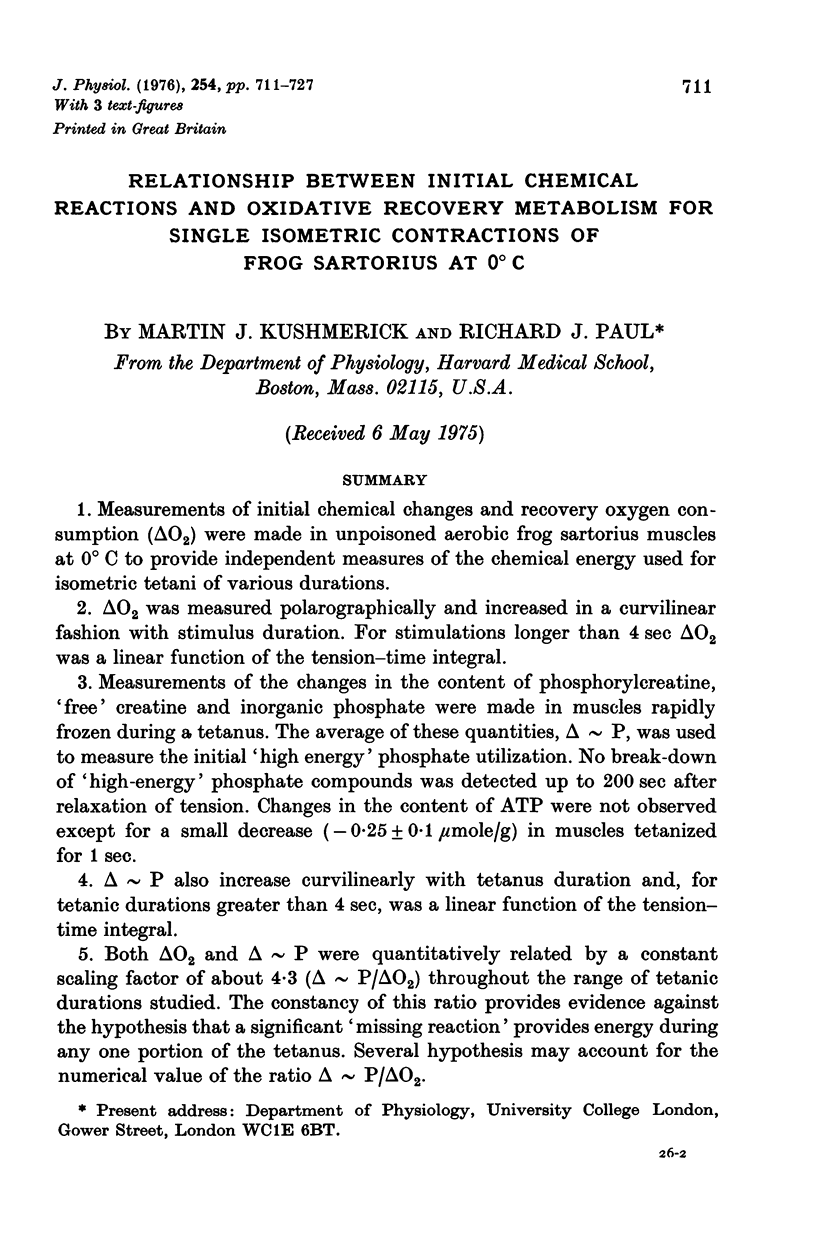
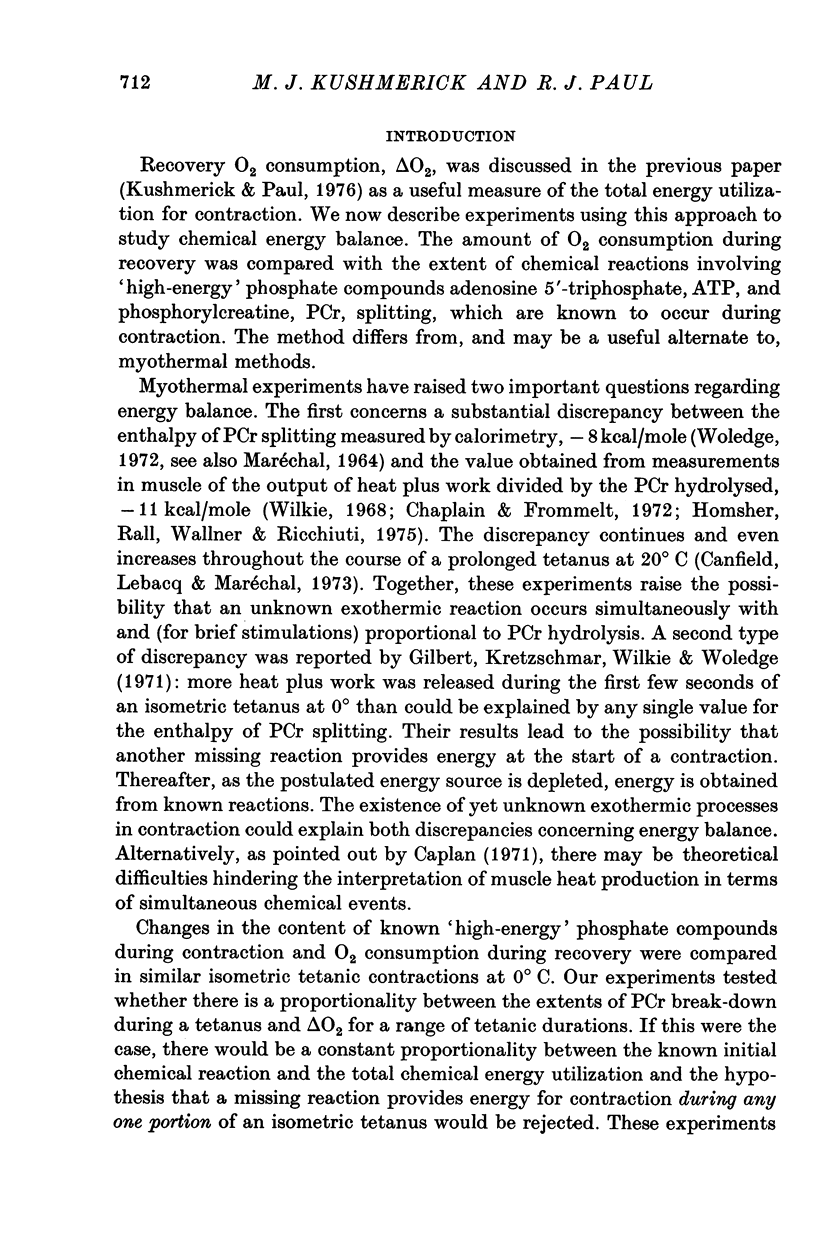
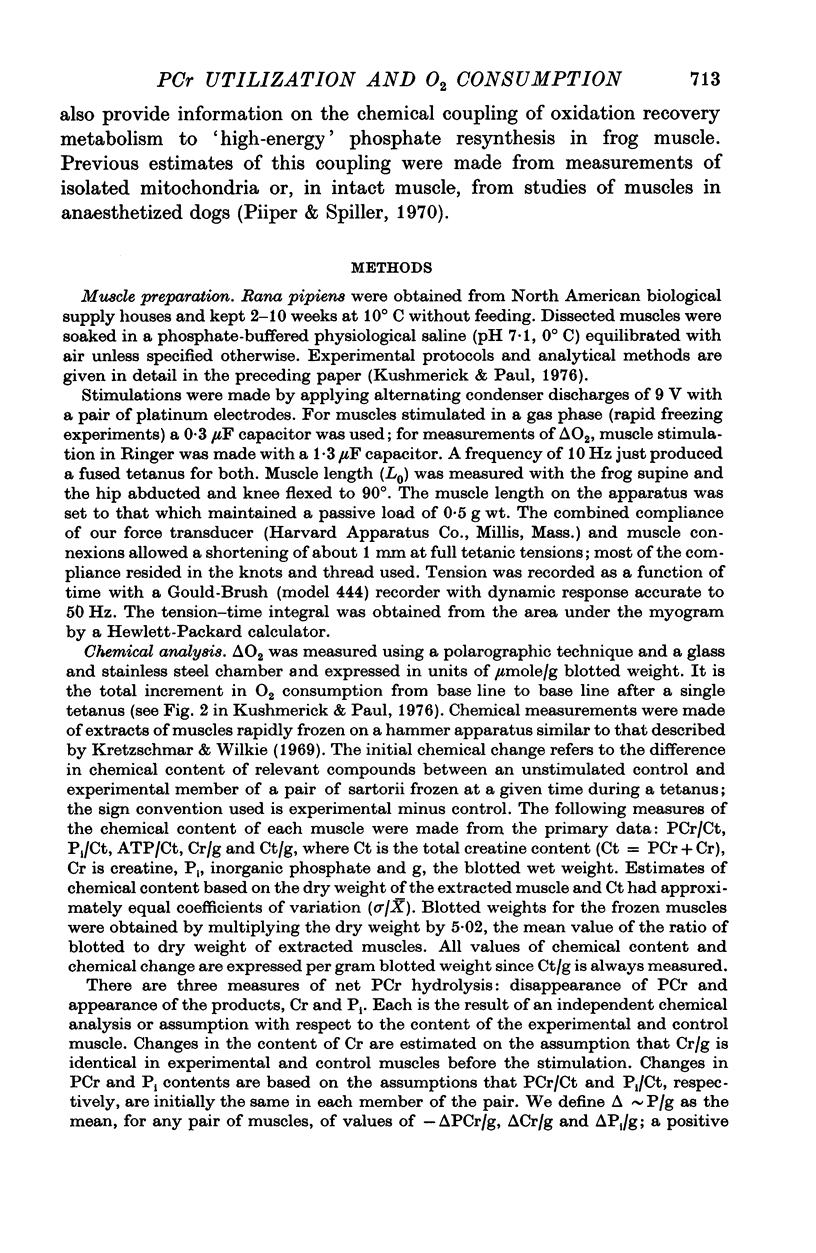
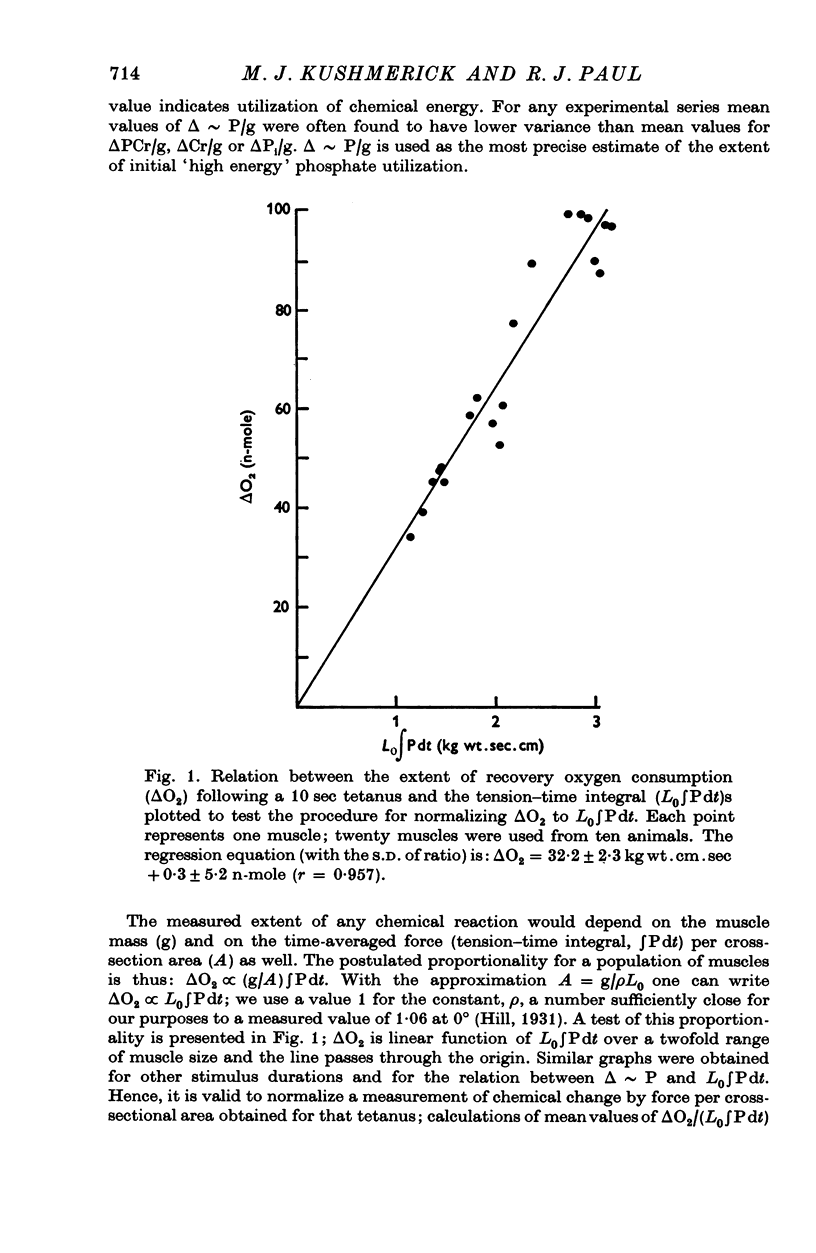
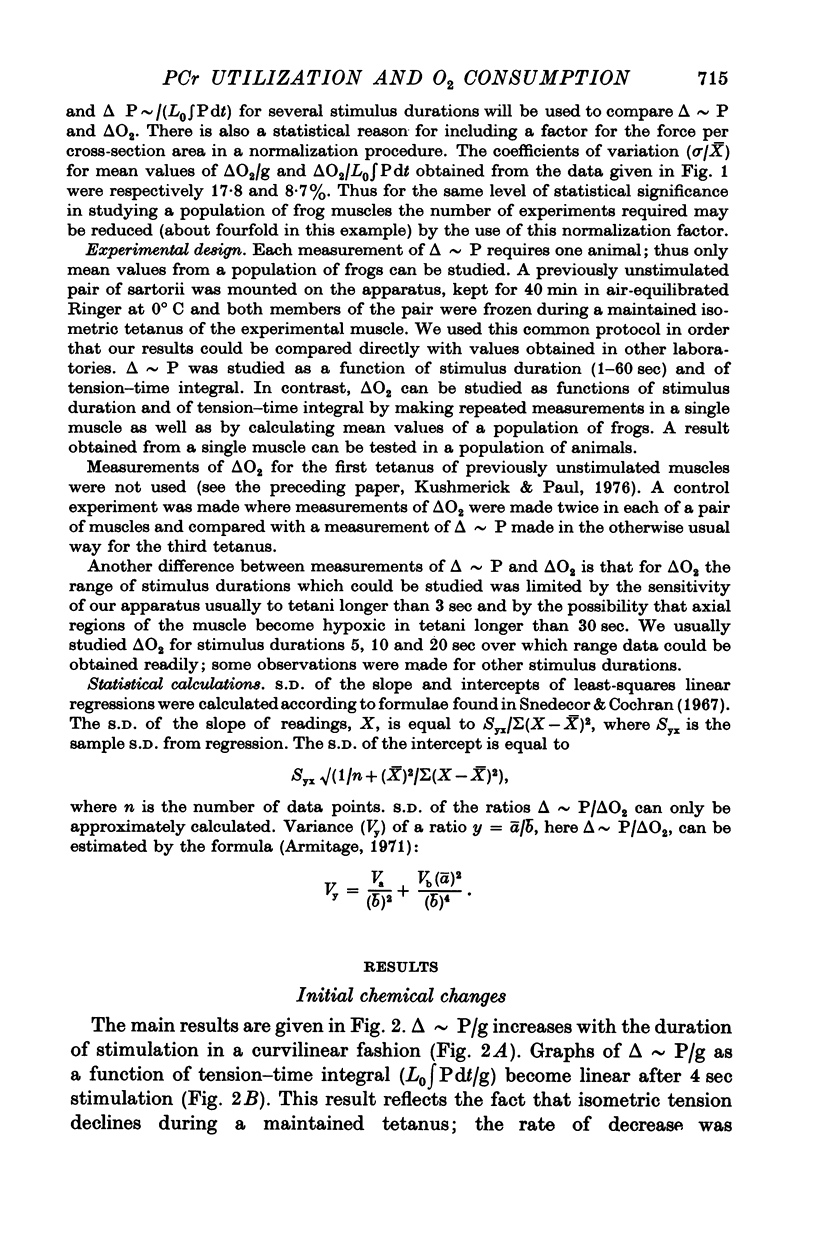
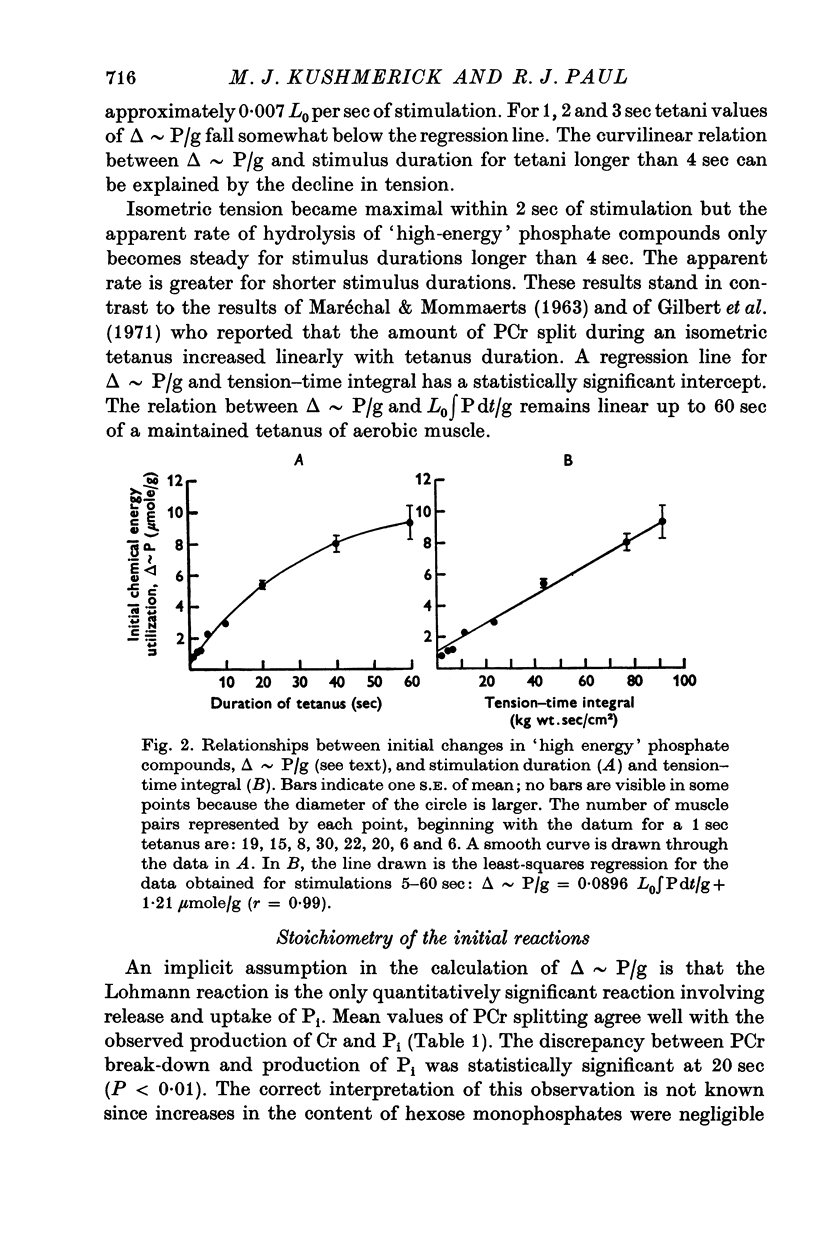
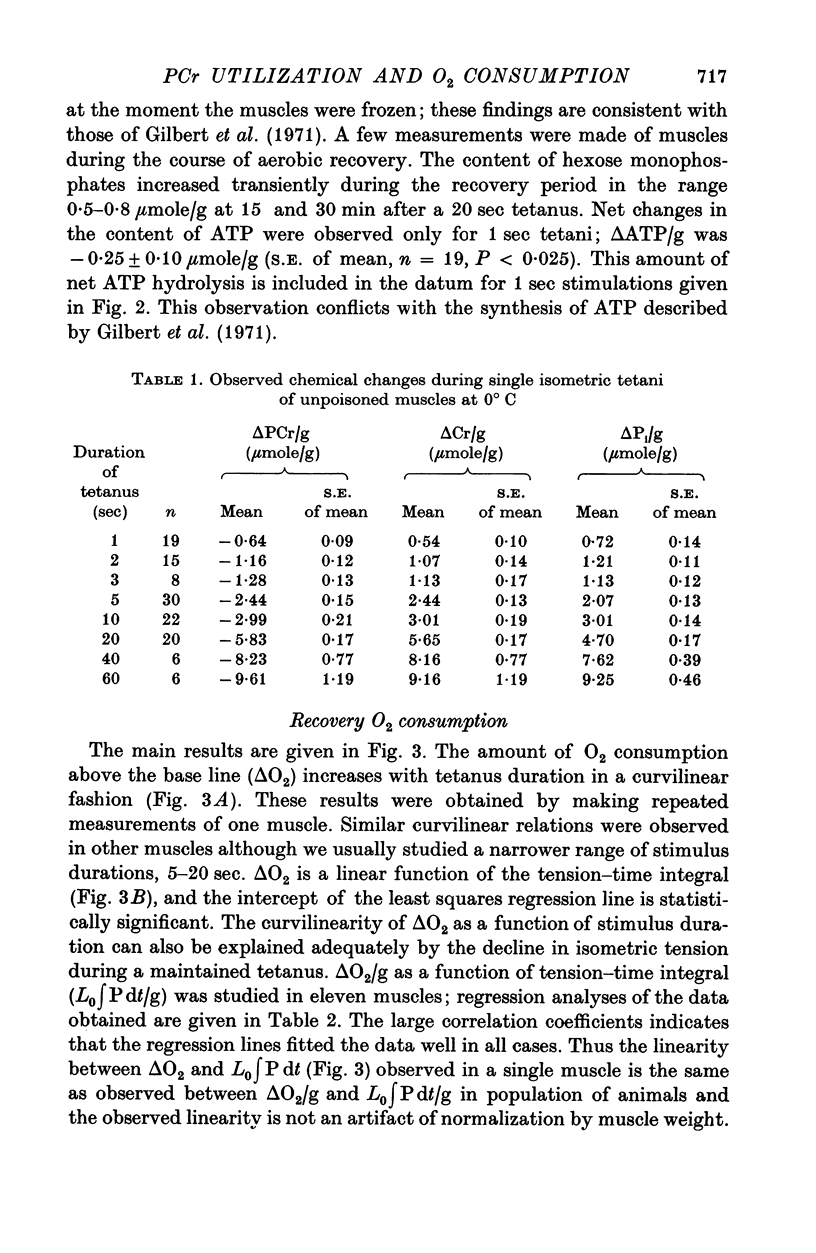
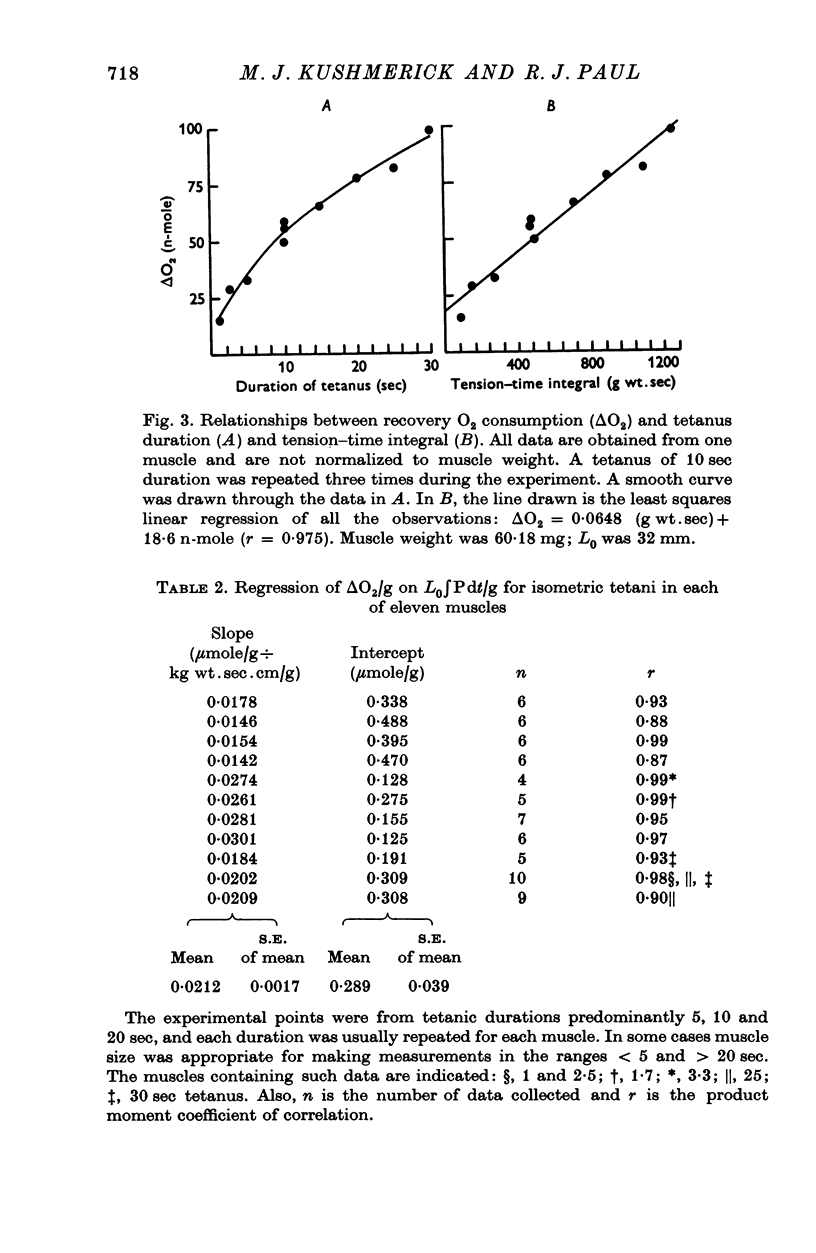
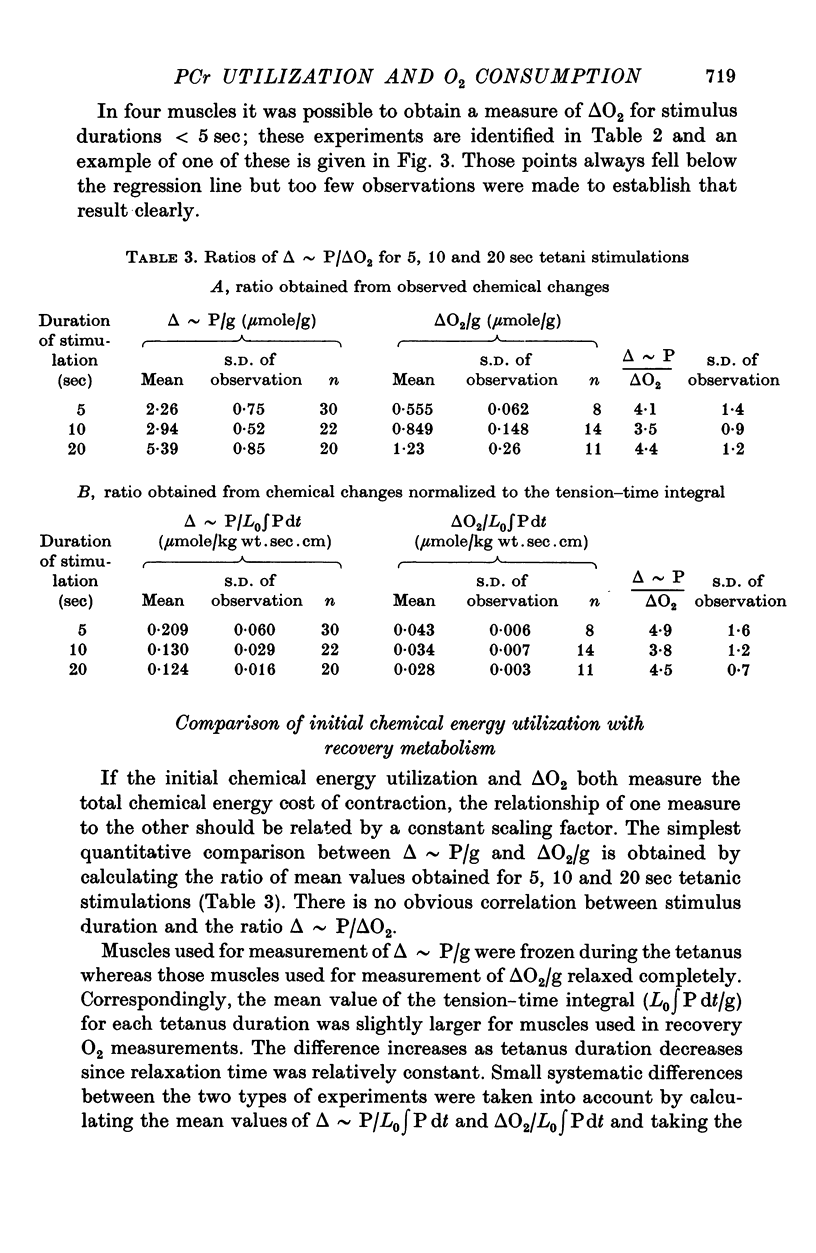
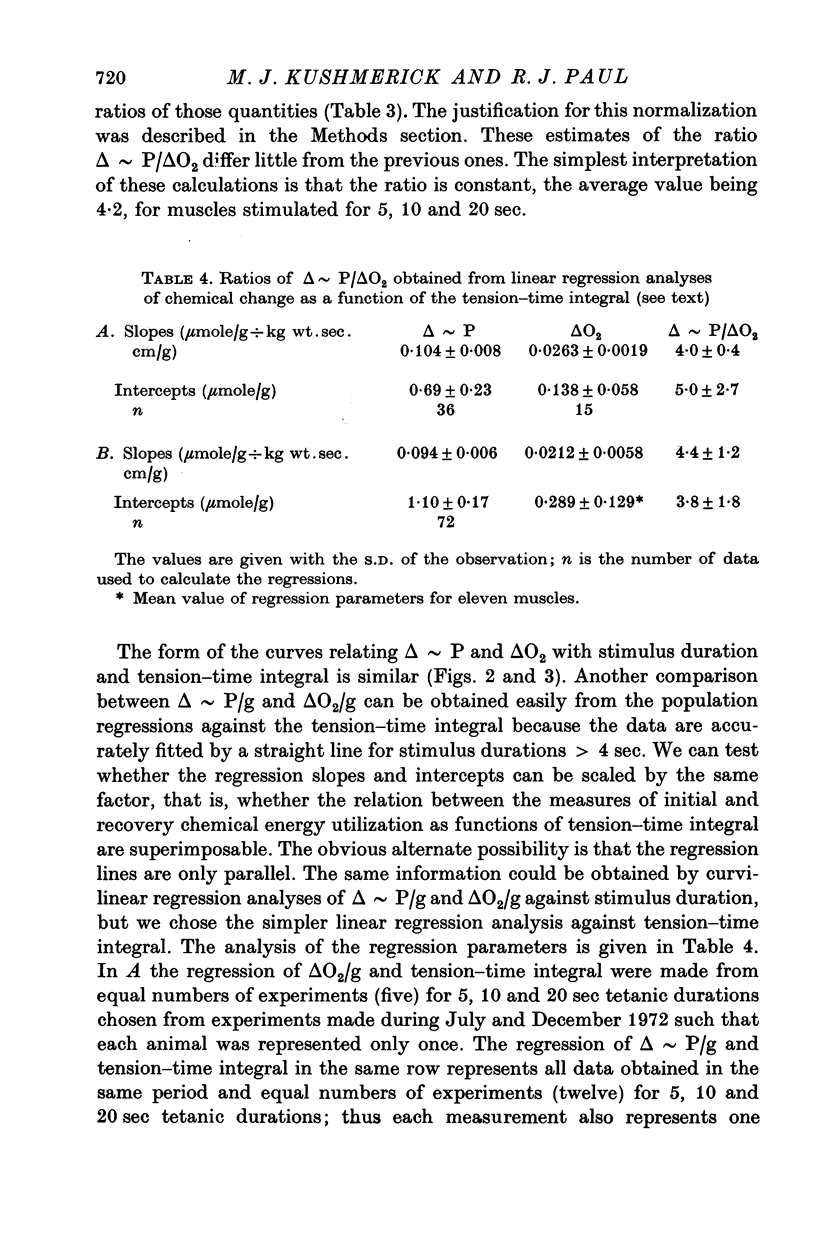
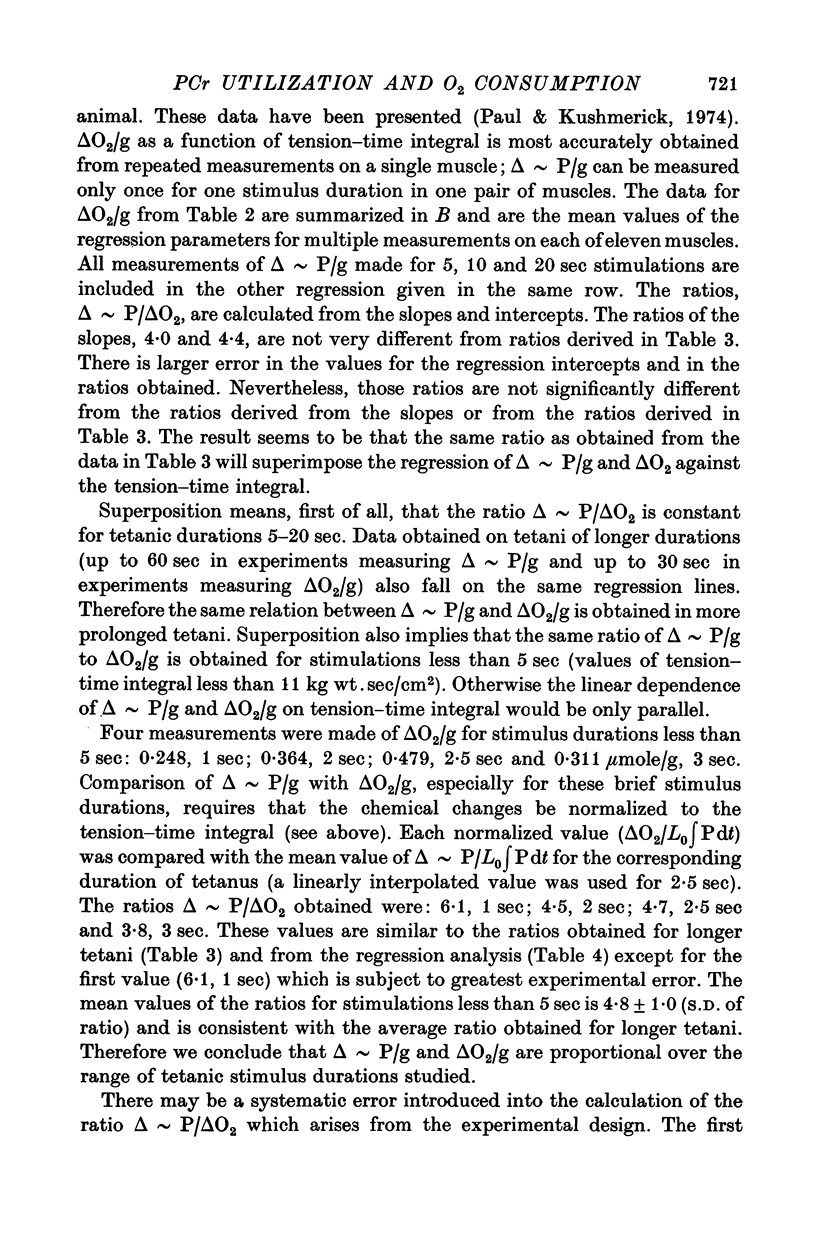
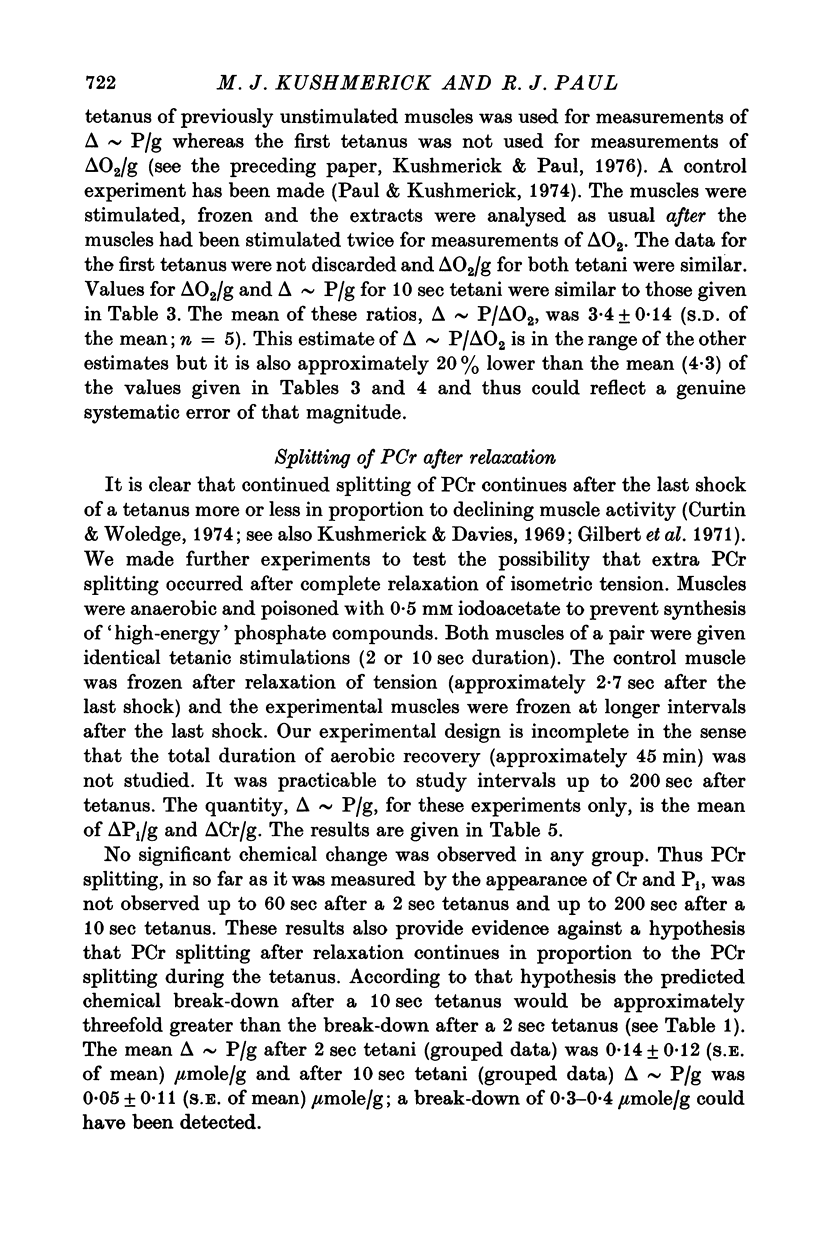
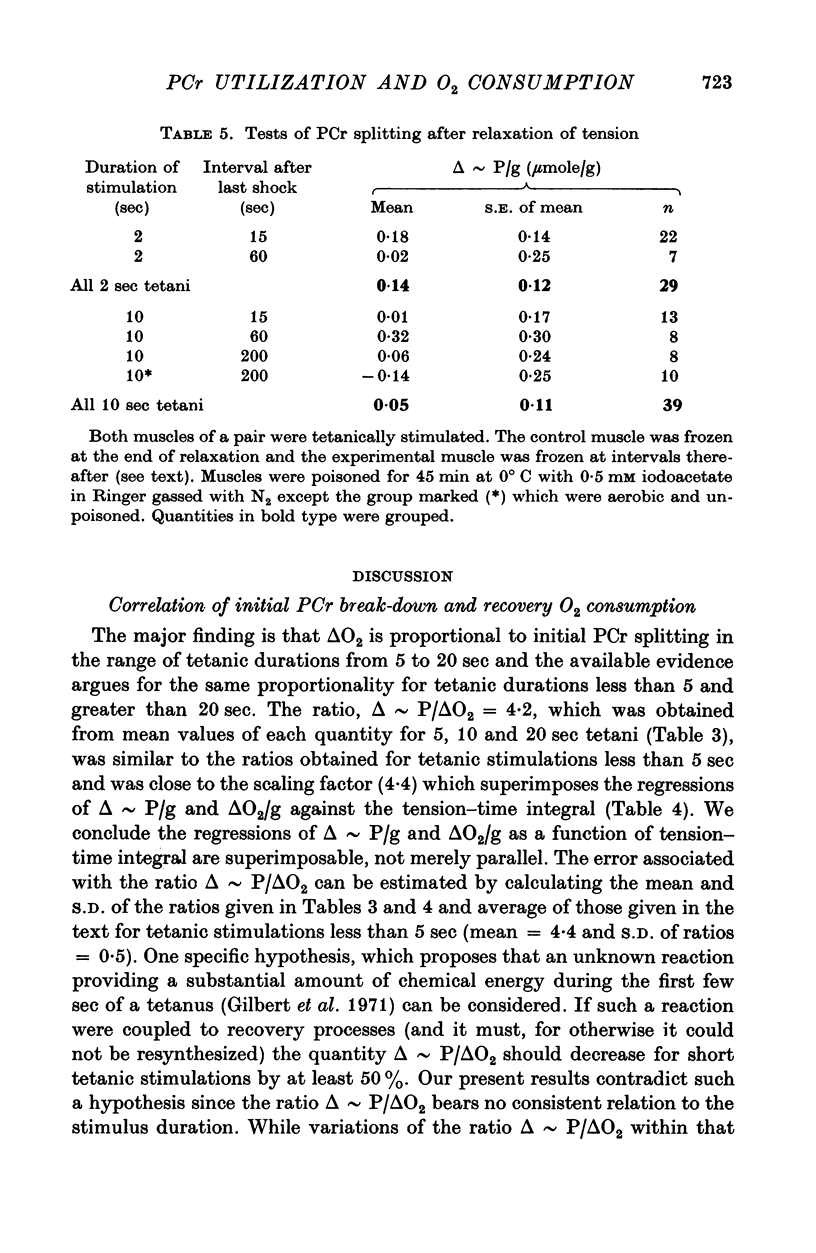
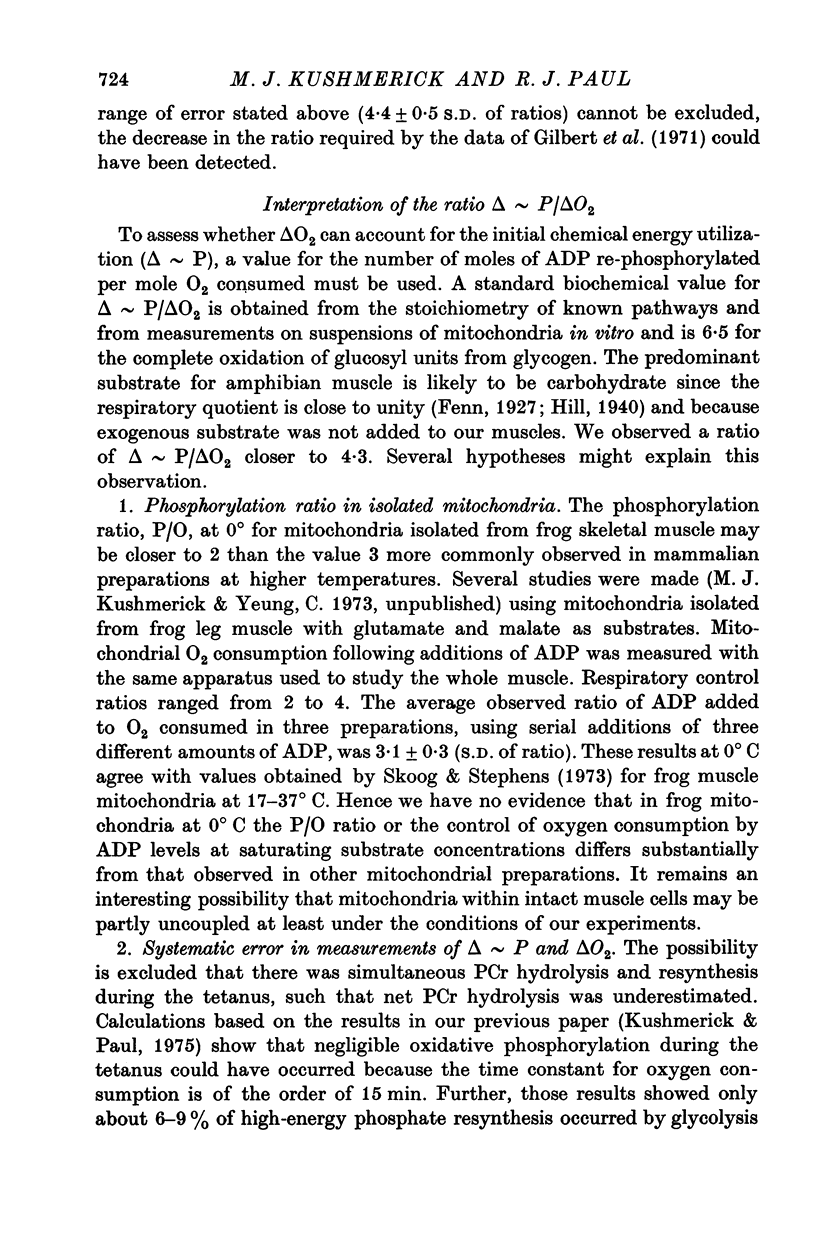
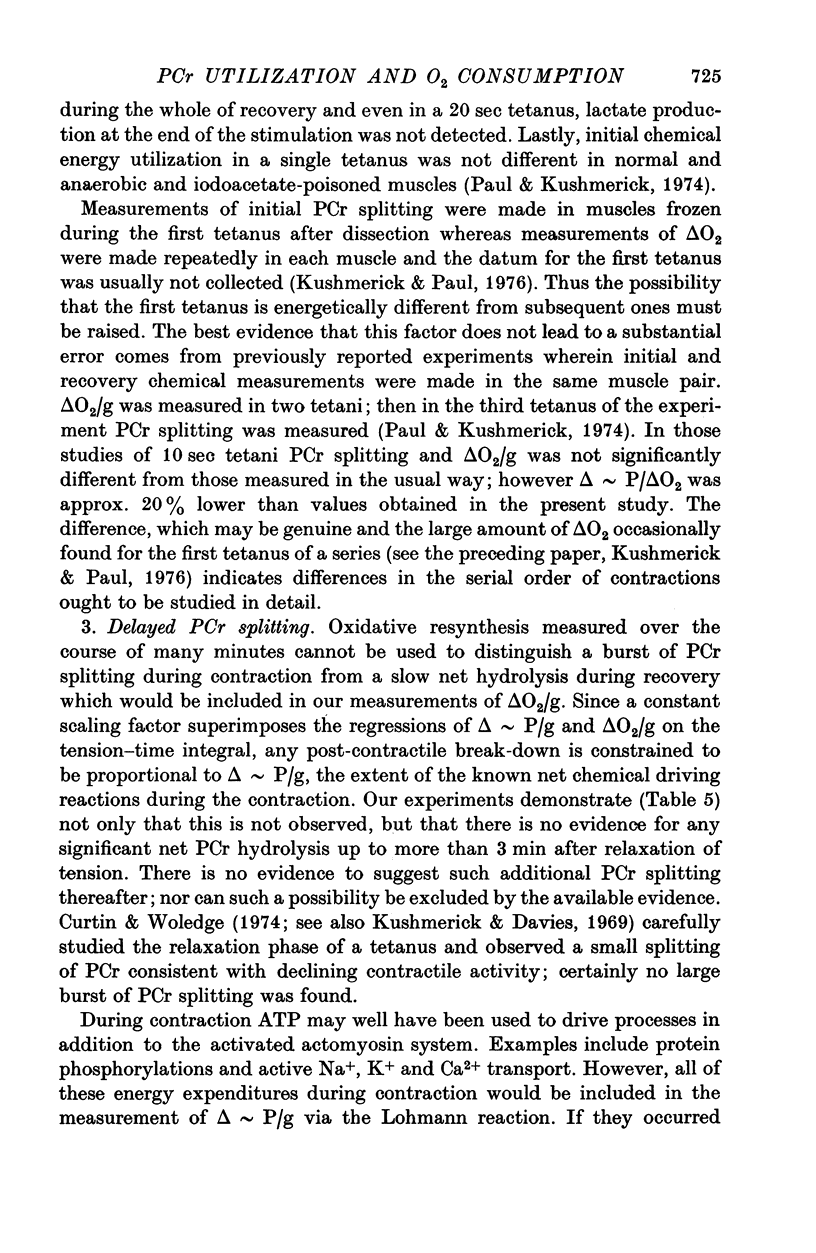
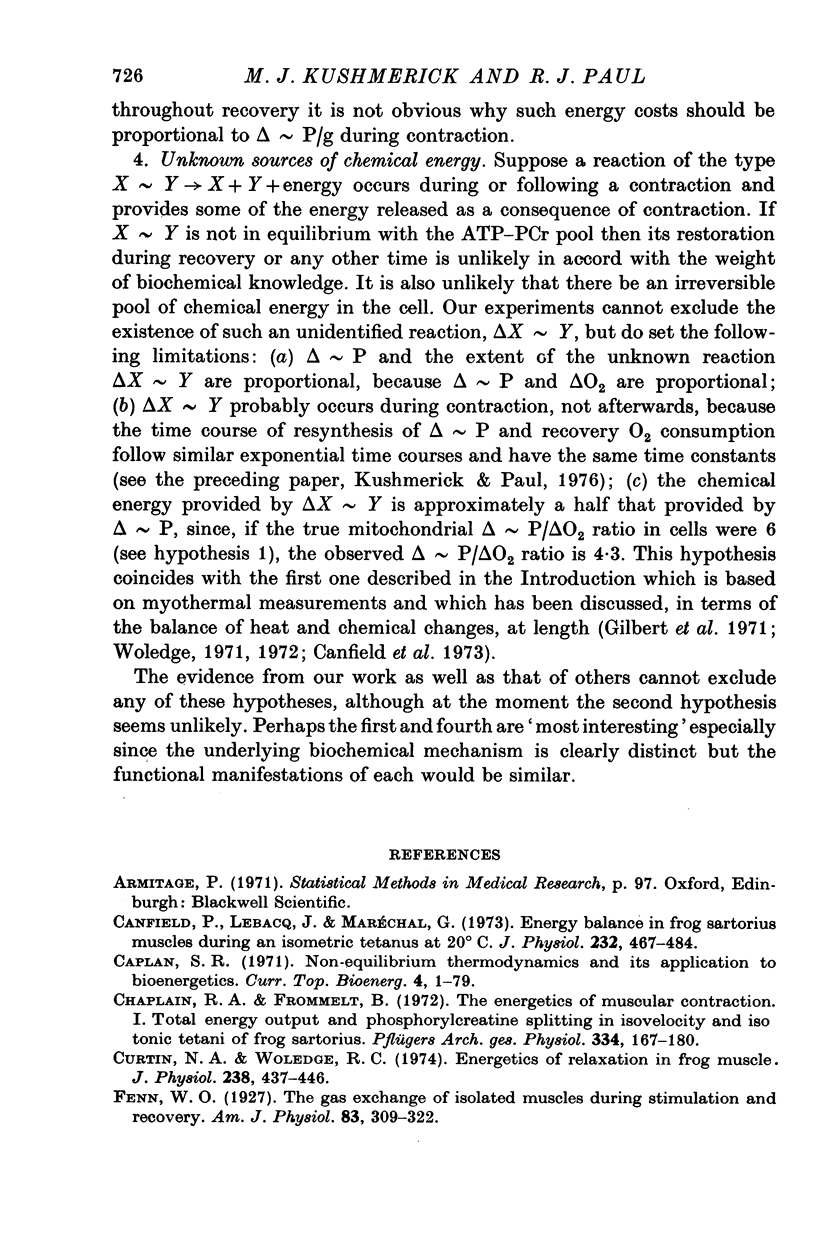
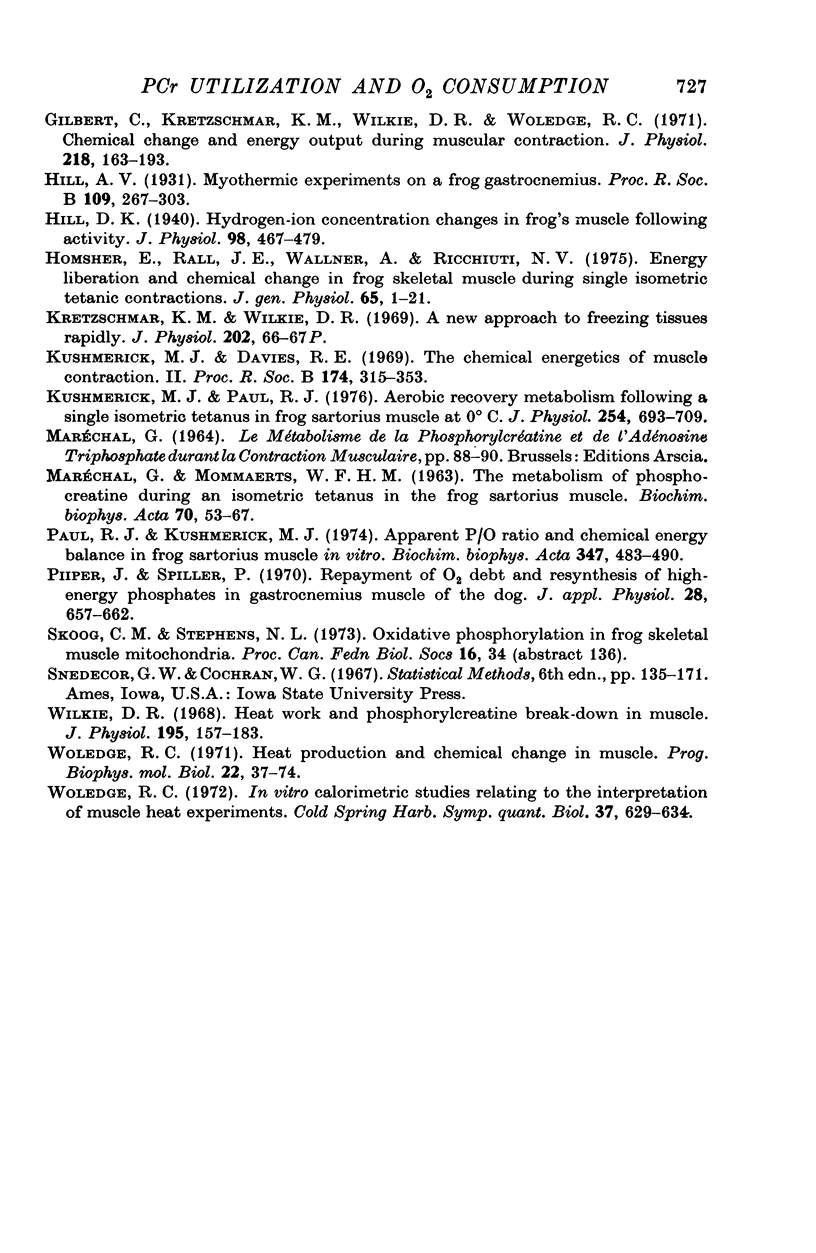
Selected References
These references are in PubMed. This may not be the complete list of references from this article.
- Canfield P., Lebacq J., MARECHAL G. Energy balance in frog sartorius muscle during an isometric tetanus at 20 degrees C. J Physiol. 1973 Aug;232(3):467–483. doi: 10.1113/jphysiol.1973.sp010281. [DOI] [PMC free article] [PubMed] [Google Scholar]
- Chaplain R. A., Frommelt B. The energetics of muscular contraction. I. Total energy output and phosphoryl creatine splitting in isovelocity and isotonic tetani of frog sartorius. Pflugers Arch. 1972;334(2):167–180. doi: 10.1007/BF00586789. [DOI] [PubMed] [Google Scholar]
- Curtin N. A., Woledge R. C. Energetics of relaxation in frog muscle. J Physiol. 1974 Apr;238(2):437–446. doi: 10.1113/jphysiol.1974.sp010535. [DOI] [PMC free article] [PubMed] [Google Scholar]
- Gilbert C., Kretzschmar K. M., Wilkie D. R., Woledge R. C. Chemical change and energy output during muscular contraction. J Physiol. 1971 Oct;218(1):163–193. doi: 10.1113/jphysiol.1971.sp009609. [DOI] [PMC free article] [PubMed] [Google Scholar]
- Hill D. K. Hydrogen-ion concentration changes in frog's muscle following activity. J Physiol. 1940 Sep 14;98(4):467–479. doi: 10.1113/jphysiol.1940.sp003865. [DOI] [PMC free article] [PubMed] [Google Scholar]
- Homsher E., Rall J. A., Wallner A., Ricchiuti N. V. Energy liberation and chemical change in frog skeletal muscle during single isometric tetanic contractions. J Gen Physiol. 1975 Jan;65(1):1–21. doi: 10.1085/jgp.65.1.1. [DOI] [PMC free article] [PubMed] [Google Scholar]
- Kretzschmar K. M., Wilkie D. R. A new approach to freezing tissues rapidly. J Physiol. 1969 Jun;202(2):66P–67P. [PubMed] [Google Scholar]
- Kushmerick M. J., Davies R. E. The chemical energetics of muscle contraction. II. The chemistry, efficiency and power of maximally working sartorius muscles. Appendix. Free energy and enthalpy of atp hydrolysis in the sarcoplasm. Proc R Soc Lond B Biol Sci. 1969 Dec 23;174(1036):315–353. doi: 10.1098/rspb.1969.0096. [DOI] [PubMed] [Google Scholar]
- Kushmerick M. J., Paul R. J. Aerobic recovery metabolism following a single isometric tetanus in frog sartorius muscle at 0 degrees C. J Physiol. 1976 Jan;254(3):693–709. doi: 10.1113/jphysiol.1976.sp011253. [DOI] [PMC free article] [PubMed] [Google Scholar]
- MARECHAL G., MOMMAERTS W. F. The metabolism of phosphocreatine during an isometric tetanus in the frog sartorius muscle. Biochim Biophys Acta. 1963 Feb 19;70:53–67. doi: 10.1016/0006-3002(63)90718-2. [DOI] [PubMed] [Google Scholar]
- Paul R. J., Kushmerick M. J. Apparent P-O ratio and chemical energy balance in frog sartorius muscle in vitro. Biochim Biophys Acta. 1974 Jun 28;347(3):483–490. doi: 10.1016/0005-2728(74)90085-1. [DOI] [PubMed] [Google Scholar]
- Piiper J., Spiller P. Repayment of O2 debt and resynthesis of high-energy phosphates in gastrocnemius muscle of the dog. J Appl Physiol. 1970 May;28(5):657–662. doi: 10.1152/jappl.1970.28.5.657. [DOI] [PubMed] [Google Scholar]
- Wilkie D. R. Heat work and phosphorylcreatine break-down in muscle. J Physiol. 1968 Mar;195(1):157–183. doi: 10.1113/jphysiol.1968.sp008453. [DOI] [PMC free article] [PubMed] [Google Scholar]


